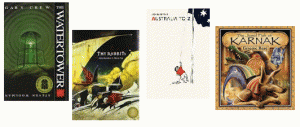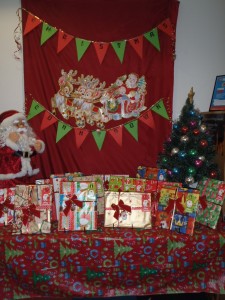
Story is the way that a culture entertains and educates, enabling the continuation of its beliefs, values and practices.
Because fiction spans cultures, ideologies, socioeconomic circumstances, and timeframes, it enables the reader to bridge the gap between what is and what is imagined. It “takes us on journeys we could never imagine alone, to places we have never been, to view our world in different ways … [journeys] which begin on the printed page and travel on from there to different places for readers and viewers … [as] we fill in the gaps and silences of the text and illustrations to complete the creation” (Kirkland, 2010).
Development of the imagination is critical because “imagination is more important than knowledge.” (Einstein). Without imagination we cannot predict, pretend, or propose – critical elements of problem solving.
Oatley (2008a) likens fiction to computer-generated simulations, allowing the reader to create mental models of situations and their possible outcomes, and possibly develop better strategies and skills to deal with them. “Frequent reading of literary fiction can facilitate the development of selfhood … fictions are typically simulations of the social world, therefore, people who spend time reading them will become more socially skilled than people who read non-fiction.” Oatley (2008b).
Author and Children’s Laureate, Michael Rosen states, “Literature …supports and challenges readers…in their views of themselves, whether it’s in their families, friendship or cultural groups or social class. It offers glimpses of human behaviour beyond those available or known to the reader. Only when all children are in a book-loving environment will they achieve literacy, yes, but a lot more: a confidence in handling abstract ideas, an understanding of a multiplicity of viewpoint and the complexity and diversity of human interaction that comes through reading widely and often.” (2008).
Fiction is an essential element of students’ lives.
While school, state and national curricula emphasise the use of story as an integral part, many teachers resort to the one-size-fits-all novel without regard to an individual’s needs, interests and abilities or even what might be happening in their life at the time that might make that story inappropriate. All the benefits of free choice seem to be ignored if not discarded and many students are turned away from reading for leisure altogether – and may not return.
The FIRST Book Club was originally established as an online initiative to connect students from a variety of communities and gets its name from activities being posted on the first of each month and due for submission before the first of the following month. The purpose of this page is to offer activities that can be applied to any book and which can be adapted to meet the needs of individuals within the group. Users are welcome to build on the ideas in any way that enables them to support the reading of the students in their care.
Activities are open-ended so they can focus on each student’s choice of literature. Organisation is up to the teacher including
- who will be invited to participate – class, school, district or beyond
- how responses are generated (including software or apps where appropriate)
- how and where responses are shared
- the establishment of guidelines for
- treating participants with respect and dignity even though there might be a disagreement of opinion
- ownership of responses including the ethical use of any ideas, information and images used
- publication of responses including clarity of meaning; respectful tone and correct spelling, grammar and punctuation
 January |
Thinking Reading Have students use Thinking Reading to reflect on their current reading habits and choices and to establish connections with other members of the group. Build a reading profile of the group using the data to create graphs and statements about what they like to read, favourite authors and so forth so that this can be used as a comparison for changes at the end of the Book Club session. Have the students begin to track their reading so they can identify their preferences, plan their future reading and make recommendations for others so they have a visible record of it. They could have personal reading journals which contain reading logs, responses, to-read plans and so forth. A service like Goodreads offers an online option for this but you might also consider Biblionasium or A Book and a Hug, Many of these crowd-sourcing sites also offer suggestions for new reading based on the student’s entries, so that helps develop a reading plan for the future. Some might like to complete What Kind of Reading Superhero Are You? to help them guide their initial choices. However the paperwork should not become more important than the reading. While individuals might set themselves personal challenges to accomplish, the reading record should never be a competitive document. Let them choose the method that suits them best. |
 February |
Book Hook Tell the group about a book you have read recently and enjoyed. Tell them the title, the author and the genre and summarise what it was about in a couple of sentences. Create a Book Hook – something that will really grab others and make them want to read it. For example, “Can a 12-year-old city girl really take on a remote farm on her own, survive and make it prosper despite the crippling drought and shearers’ strike of the 1890s?” (A Waltz for Matilda, Jackie French, Angus & Robertson, 2010) Tell the group why others should read it too. Don’t just say, “It was good.” You need to persuade them that it is worthwhile tracking it down in the library or a bookshop and making the time to read it, so think about the language and techniques you would use to do that. Think about its storyline (action-centred; character-driven; thought-provoking); its pace (hectic, relaxed, engrossing); its characterisation (quirky, realistic, familiar) and its tone (humorous, mysterious, romantic). Give us a snapshot so we can decide if it’s the sort of thing that will appeal. You can do this by creating a print or digital presentation such as a poster, infographic, a slideshow or a book trailer. |
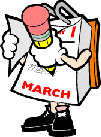 March |
Setting the Scene The context in which a story is set – its geographical, social, cultural or historical placement- can have a huge impact on its characters and plot. It can provide the lens through which we read and understand the story. For example, without pictures Looking for Crabs by Bruce Whatley may have no meaning for a reader who has never been to the beach and explored rock pools; or a reader may not appreciate the risks Ayesha takes in Oranges in No Man’s Land by Elizabeth Laird if they know little about living in a war-torn community. Similarly, in A Waltz for Matilda by Jackie French, Matilda cannot use a mobile phone to get help, nor social networking to tell her neighbours she is safe because they had not been invented in the time the story was set. Your task is to select a book that you have enjoyed that relies on having the reader understand specific concepts and explain these. We would like you to identify THREE elements and explain these using information and images. For example, if the story is set on a country border, you might provide a map of the area; if a costume plays a significant role, find a picture of it and explain how it was used; if a person has a certain belief which shapes their behaviour, explain that to us. You might get a better idea if you have a look at this blog from a teacher who is explaining some of the references in Wonder by R.J. Palacio. Decide the best way to share your explanations so others can take advantage of your work when they read the story for themselves. |
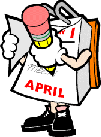 April |
Meet and Greet The secret to writing a good story is to create characters that the reader connects with and cares enough about to read to the end to find out what happens to them. Select a book you have enjoyed in which the characters have seemed like real people that you know and you have been so engrossed in the story that you felt as though you were a character yourself, rather than an observer, or that you felt that if the character was real, he/she would be a close friend. Think carefully about why you connected so closely with that character.
Introduce the group to the character (include the title and author of the book) and tell us who they are, what they do, how they are strong, how they are vulnerable and anything else that will bring them to life for us in a similar way that they came alive for you. Consider
Think about the best way you could make your character come alive so that others want to meet them too by reading the book for themselves. |
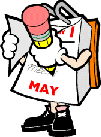 May |
Read and Reflect Create a Bookmark Review. Choose a book from your school library that you have really enjoyed and create a review that can fit on a bookmark that will be attached to the book. On the front create your version of the cover of the book including title and author, and on the back write your recommendation to entice others to read it. Because you only have a little amount of space, you will have to think carefully about what you will include. Attach it to the book. If you know of another review or book trailer for the book that you think your friends will enjoy you could add a QR code to the bookmark so they can scan it and read it too. Search the Internet for free QR code generators or ask your teacher librarian for help. |
 June |
Picking Picture Books Picture books are not just for pre-schoolers. Many authors like Gary Crew, Shaun Tan, Armin Greder, John Marsden and Graeme Base write stories designed for older readers and choose the picture book format so the illustrations explain, enrich and enhance the story and give the reader lots more to think about. Read at least five picture books (not graphic novels) written for older readers and choose your favourite. Examine it closely and consider why the picture book format has been chosen to tell the story. How do the pictures enrich and enhance the setting, characters, plot, mood and atmosphere? Write a paragraph about your chosen title being an exemplar of the genre to show your teachers and friends that picture books are for everybody. Accompany it with your own picture drawn in the style of the illustrator to demonstrate the relationship between the text and the illustrations in the book.
|
 July |
Design a Display Select an event, a celebration or an author’s birthday and create a display for your school library based on it using as many books, fiction and non fiction, as possible as highlights. Consider the elements of eye-catching displays and incorporate these so you can persuade others to read the books and broaden their knowledge. Include information and explanations so viewers understand why the focus topic is chosen and why reading further might appeal to them. Negotiate the timing for your display with your teacher librarian so it coincides with the event, celebration or birthday. 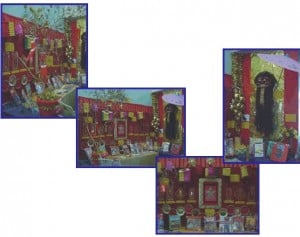 This display of books and artefacts focused on Chinese New Year |
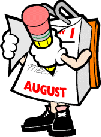 August |
August is Children’s Book Week in Australia when the Book of the Year in a number of categories is announced. Select a book from the shortlist of one of the categories
Write 200 words or prepare a two-minute speech that will convince the judges that this should be the winner for this year. Look for an angle that perhaps the judges haven’t thought of. Think about the persuasive language that would influence them and back your argument with evidence so they understand that you know what you are writing/ talking about.
If you are not in Australia, choose your country’s national awards as your focus. |
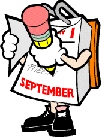 September |
Blurb for a Blind Date Select a book from the school library that you have read this year and really enjoyed. Keep your choice a secret. Wrap it in brown paper and ribbon so its title and author cannot be seen. On the back, write a blurb for the story that will entice others to read it without giving away the title, author, series or genre. Place it on a display with books similarly wrapped by other students so there is one from each member of the group. Each member of the group chooses a book to read and review, explaining what it was about the blurb that attracted them and whether the book lived up to expectations. Is this an author/series/genre they would choose again? |
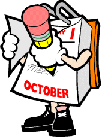 October |
Beyond Your Boundaries Step beyond your regular reading this month and try an author, subject, series or genre that you haven’t tried before. Perhaps it is time to try drama or poetry, a verse novel or a graphic novel. Before you read it consider
During your reading, stop and think about
After you have read, reflect on it and consider
Summarise your reflections in your reading journal. Reflecting on your reading in this way helps you become a critical reader so you begin to understand the sorts of things you like to read so you can make more informed choices. |
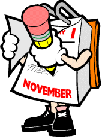 November |
Christmas Countdown Read a range of books with a Christmas theme and select 24 that could become part of a Christmas Countdown for younger children. Create a print or digital list that could be used by a parent, a teacher or a teacher librarian as a guide for reading the stories aloud to young children starting on December 1 and going through till December 24. Include
If it is practicable, collaborate with the teacher librarian or early childhood teacher to present your Christmas Countdown at an appropriate time each day. You might like to create a display of wrapped books to entice listeners to the event.
|
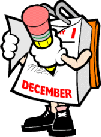 December |
Reading Reflection Have students reflect on their reading for the year.
Have them compile a list of 12 books that they want to read over the coming year. |
References
Oatley, K. (2008a). The science of fiction. New Scientist, 2662, 42-43.
Oatley, K. (2008b). The mind’s flight simulator. The Psychologist, 21, 1030-1032.
Rosen, M. (2008, August 21). ‘SATS literally failing’, The Guardian.
Attribution-NonCommercial-Share Alike
CC BY-NC-SA
Teacher Librarian
M.Ed.(TL), M.App.Sci.(TL), M.I.S. (Children’s Services)
Dromkeen Librarian’s Award 2003
COOMA NSW 2630
AUSTRALIA
Together, we learn from each other
